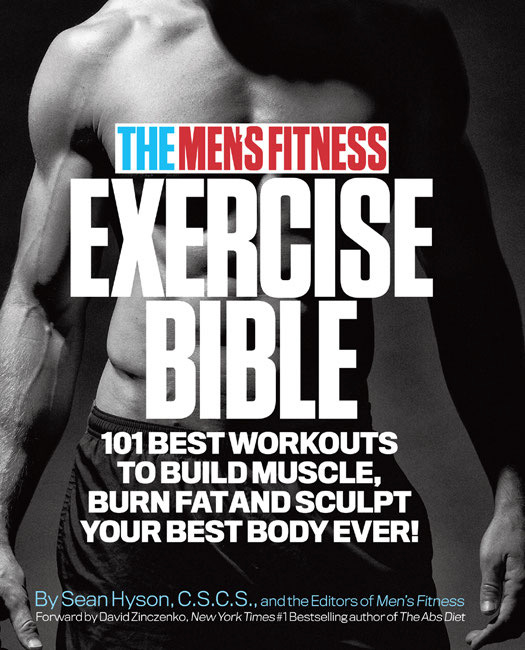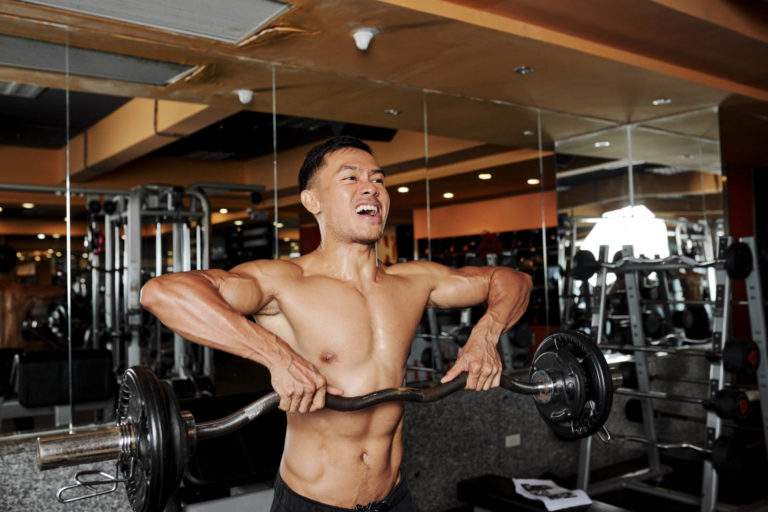STRENGTH SENSEI BOOKSHELF
The Men’s Fitness Exercise Bible
A closer look at a beginners guide to home workouts
If any book deserved the title of “exercise bible,” this is it! The Men’s Fitness Exercise Bible is massive at 340 pages and 1.87 pounds. It’s professionally-produced and contains 101 easy-to-follow workouts with exercise descriptions and photos, making it a decent reference for those who are clueless about training.
The editor of this 2013 edition is Sean Hyson, C.S.C.S., and contains workouts designed by him and the editors of Men’s Fitness. Most have the National Strength and Conditioning Association’s “Certified Strength and Conditioning Specialist” certification, but not always. One writer has the credentials C.P.T., another M.F.S., and some have no letters after their name.
The book could be described as a one-stop shop resource of all the basic resistance training exercises and focuses on those that can be performed at home. There are bodyweight exercises, and when resistance is required it’s with the basics: barbell, dumbbells, kettlebells, adjustable bench, elastics bands, medicine balls, Swiss balls, and suspension trainers. For one of the home workouts, exercises with the standing and seated calf machines are recommended, but alternative barbell exercises are mentioned.


Each exercise shows a shirtless male fitness model in shorts performing the start/finish and mid-point of each exercise. The written descriptions are brief, usually only a few sentences. One issue is that with exercises requiring barbell stands, the stands are not shown. Examples include the hang clean and the barbell incline bench presses.
For some exercises, more instructions and photos are needed. Also, to stay brief, no explanations are given as to why certain positions are suggested. For example, with the squat, the trainee is told to grasp the barbell as far apart as comfortable (in contrast to what Charles Poliquin suggests, which is to use a narrower grip to keep the back for stable).
What would attract the general population to this book is the variety and large number of workouts provided. That said, consider the workout called “The Best Body-Recomposition Workout” (whatever that means?).
The introduction to this workout says it was designed according to the work of Hala Rambie and is known as German Body Comp. A four-digit tempo is provided, and the exercises are organized with the number/letter system (so 1A and 1B, and so on). Fine, but the author of this workout, Joe Dowdell, CSCS, gives no credit to Coach Poliquin. (In contrast, Charles Staley’s name was mentioned for inspiring “The Best 30-Minute Workout.”)
Another issue with the “recomposition workout” is that some of the tempo prescriptions are odd, such as the rest position of an inverted row (horizontal pull-up) being at the top of the movement (2011), and there being a one-second pause at the bottom of dips (3110). That said, the other workouts just stick to prescribing three loading parameters: sets, reps, and rest.
The book includes a cardio section using running, a jump rope, popular cardio machines, bodyweight exercises, and two (extremely brief) sections on boxing and MMA. Some important information was left out of these sections, such as when to perform these workouts: before weights, after weights, on off days?
Although this book is promoted for men’s fitness, there is no explanation why these workouts are better for men than women? In fact, the only mention of women is during the butt workouts where the author says that women will appreciate you performing exercises for this area.
For someone who is new to resistance training and wants a complete resource on how to train at home, The Men’s Fitness Exercise Bible could be a good investment to get them started. The writing is sharp, the tables are simple and easy to understand, and the photos are of high quality. But if you’re serious about getting stronger and building muscle, you should quickly move on to other sources of information. (TSS)
[The Men’s Fitness Exercise Bible by Sean Hyson is available in paperback and a Kindle version through Amazon.com.]
